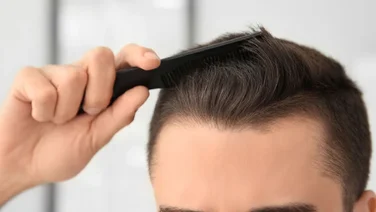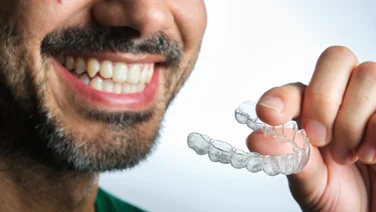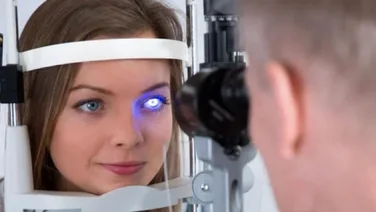Rhinoplasty, also known as nose reshaping or a “nose job”, is a surgical procedure designed to reshape or reconstruct the nose to improve its appearance, function, or both. If you want to improve the shape or size of your nose, rhinoplasty is the best solution. It can be very helpful if the shape of your nose is causing breathing difficulties.
Rhinoplasty Can Involve:
- Making your nose smaller, by removing some of the cartilage and bone.
- Making your nose larger, using cartilage from the ears and bone from either the ribs, hips, elbow or (more rarely) the skull.
- Changing the shape of your nose by breaking the nose bone and rearranging the cartilage.
- The surgeon will either make a cut across the skin between the nostrils (open rhinoplasty), or tiny cuts inside the nostrils (closed rhinoplasty). A closed rhinoplasty means you won’t have any scarring.
Benefits of Rhinoplasty
- Achieve your desired look: Rhinoplasty can help you to gain the appearance you want, for example by refining the shape, size, or proportions of your nose to better complement your other facial features.
- Improved breathing: You can have nose surgery to correct structural issues such as a nasal obstruction or a deviated septum (when the thin wall between your nasal passages is pushed to one side) to improve breathing and airflow. The correction of a deviated septum is called a septoplasty. A septorhinoplasty is a procedure to correct a deviated septum combined with reshaping of the nose. These procedures can ease breathing difficulties, nasal congestion or snoring, leading to better overall respiratory health.
- Corrects nasal injuries: Rhinoplasty can repair damage caused by accidents or other injuries, restoring the nose’s appearance and function to its pre-injury state.
- Tailored to your needs: Rhinoplasty is highly customisable, allowing your surgeon to work closely with you to develop a personalised plan that achieves the look you want and addresses any breathing issues.
- Permanent results: Rhinoplasty offers long-lasting, usually permanent, changes, meaning you can enjoy the effects for years to come.
Risks Of Rhinoplasty
Rhinoplasty may not be the right choice for everyone. It’s always a good idea to consider the risks before you commit to a surgical procedure.
- Cost: The cost of nose reshaping in the UK typically ranges from £4,000 to £7,000. This may not include the cost of any consultations, further surgery or follow-up care you may need. You can’t usually get nose surgery on the NHS, unless it’s to address issues that affect your breathing.
- Recovery: You may have nosebleeds for a few days afterwards, as well as bruising and swelling around the eyes, which can last three weeks. You’ll probably need to take two weeks off work. Iit can take up to six months for all of the swelling to go.
- Risks of having surgery: These can include infection, bleeding or blood clots.
- Risks of nose reshaping: Occasionally, this can lead to issues such as nosebleeds, loss of sense of smell, breathing difficulties or damage to the cartilage wall between your nostrils.
What Does Rhinoplasty Involve?
Here’s how the process typically works:
- Choose the right surgeon. Choosing the right provider or surgeon is an important step. In the UK, the clinic or hospital who does your hair transplant should be registered with the Care Quality Commission (CQC) and the surgeon who does the procedure should be registered with the General Medical Council (GMC), on the specialist register and have a licence to practise. Usually, cosmetic surgeons should also be members of either the British Association of Plastic, Reconstructive and Aesthetic Surgeons (BAPRAS) or the British Association of Aesthetic Plastic Surgeons (BAAPS), or other professional association.
- Initial consultation: You should always have an initial consultation with the surgeon before the surgery. This should cover your goals, medical history, and the specific concerns you want to address. The surgeon will evaluate your nose’s structure and recommend the best approach for your needs, whether cosmetic, functional, or both.
- Personalised surgical plan: Based on your goals and the surgeon’s assessment, a customised surgical plan will be developed. This plan will outline the specific changes to be made, the surgical techniques to be used, and the expected outcomes.
- Pre-surgery preparation: Your surgeon will provide detailed instructions on how to prepare for the surgery. This may include avoiding certain medications, stopping smoking, and arranging for someone to drive you home after the procedure.
- Undergo the surgery: You’ll have the rhinoplasty in a clinic or hospital. The surgery usually takes 1.5-3 hours, depending on the complexity of the changes. Most rhinoplasties are performed under general anaesthetic. You will usually stay in the hospital for a night or two afterwards.
- Post-operative care and recovery: After the surgery, you will receive instructions for post-operative care to ensure a smooth recovery. This may include managing swelling and bruising, avoiding strenuous activities, and following up with your surgeon. You’ll need to wear a dressing and a splint to hold your nose in place for about seven days.






